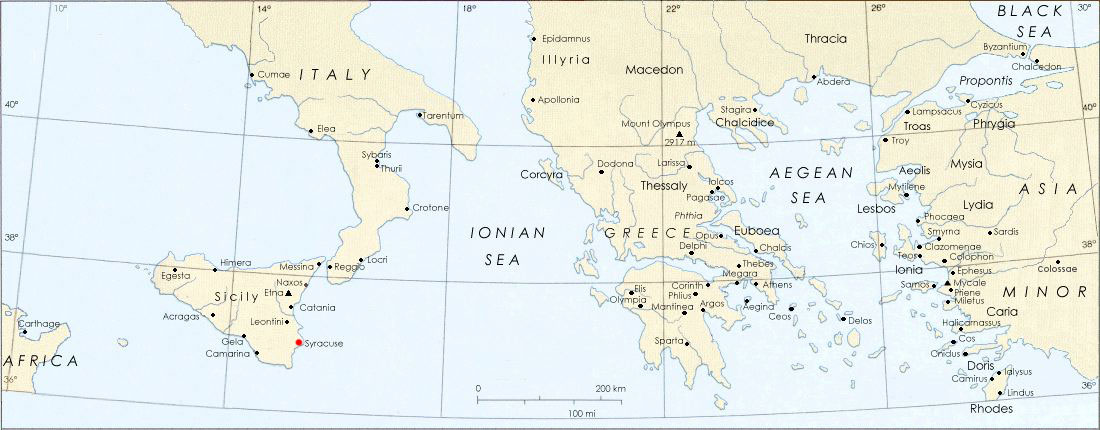Syracuse was settled about 734 BC by Corinthians led by the aristocrat Archias, and the city soon dominated the coastal plain and hill country beyond. The original Greek settlers of the city formed an elite (gamoroi), while the Sicel natives (Siculi) worked the land as an oppressed class. In the early 5th century BC, the Syracusans were defeated by Hippocrates of Gela, a city lying to the west. The power of the gamoroi in Syracuse was subsequently ended by a democratic revolution, and in exile the gamoroi supported Hippocrates' successor, Gelon, who captured Syracuse and transferred his government there. Gelon ruled Syracuse from 485 to 478. His defeat of a great Carthaginian invasion in 480 at Himera confirmed his supremacy, and, under him and his brother Hieron, Syracuse attained a high point of power and cultural brilliance. A revolution in 466 overthrew Hieron's successor as tyrant, Thrasybulus, and under a democratic constitution the Syracusans survived wars against the neighbouring city of Acragas and the Siculi, although they had to abandon the territorial empire that Gelon had acquired. Most importantly, the Syracusans survived a long siege by the Athenians (415413) that took place during the Peloponnesian War, ultimately destroying the Athenian invasion force in Sicily and weakening Athenian power in Greece itself.A few years later Sicily faced a Carthaginian resurgence. But Syracuse was saved from the fate that overtook Acragas and other Sicilian cities by its general, Dionysius the Elder, who obtained autocratic power in 405 and ruled Syracuse as its tyrant until 367. Dionysius fought three wars against the Carthaginians, confining their territorial dominions to the western part of Sicily, and he extended Syracusan control to most of the "foot" of Italy. Under Dionysius, Syracuse became the most splendid and the best fortified of all Greek cities. Its naval power was vastly increased, too, until its fleet was the most powerful in the Mediterranean. Dionysius' son Dionysius the Younger saw a decade of peace before his autocracy was challenged by his uncle Dion, who won a brief, bloody civil war but was himself assassinated in 354. The period of civil war that followed was ended by the Corinthian Timoleon, who defeated Carthage and reordered Sicilian affairs (344336), introducing a moderate oligarchy in Syracuse. In 317 this was overthrown by the adventurer Agathocles, who became tyrant and later king. He established a Syracusan empire that broke up at his death in 289.
In the ensuing chaotic conditions Sicily was rescued by Pyrrhus of Epirus from further Carthaginian encroachments, but his mercenaries later seized Messana (now Messina). Their defeat by Syracuse under a new leader, Hieron II, caused the intervention of Rome, with whom Hieron came to terms. After Hieron's death in 215, the Syracusans became allies of Carthage and were besieged by the Romans in 213. After its fall to the Romans in 211, Syracuse became a provincial capital.
In AD 280 Syracuse was ravaged by Frankish invaders but soon recovered a prosperity that lasted until its capture by the Arabs in 878. During the late Roman and Byzantine periods and under Norman, Swabian, and Spanish rule, Syracuse shared the vicissitudes of the rest of the island. It was shattered by an earthquake in 1693 and owes some of its finest architecture to the ensuing reconstruction efforts. The Allied invasion of Sicily in 1943 during World War II caused Syracuse some damage that was swiftly repaired in a new and greater postwar prosperity. The city is now a centre for processing local agricultural produce and has several other light industries. The harbour, with its commerce and fishery, and tourism are further sources of income. (Encyclopędia Britannica Online.)
